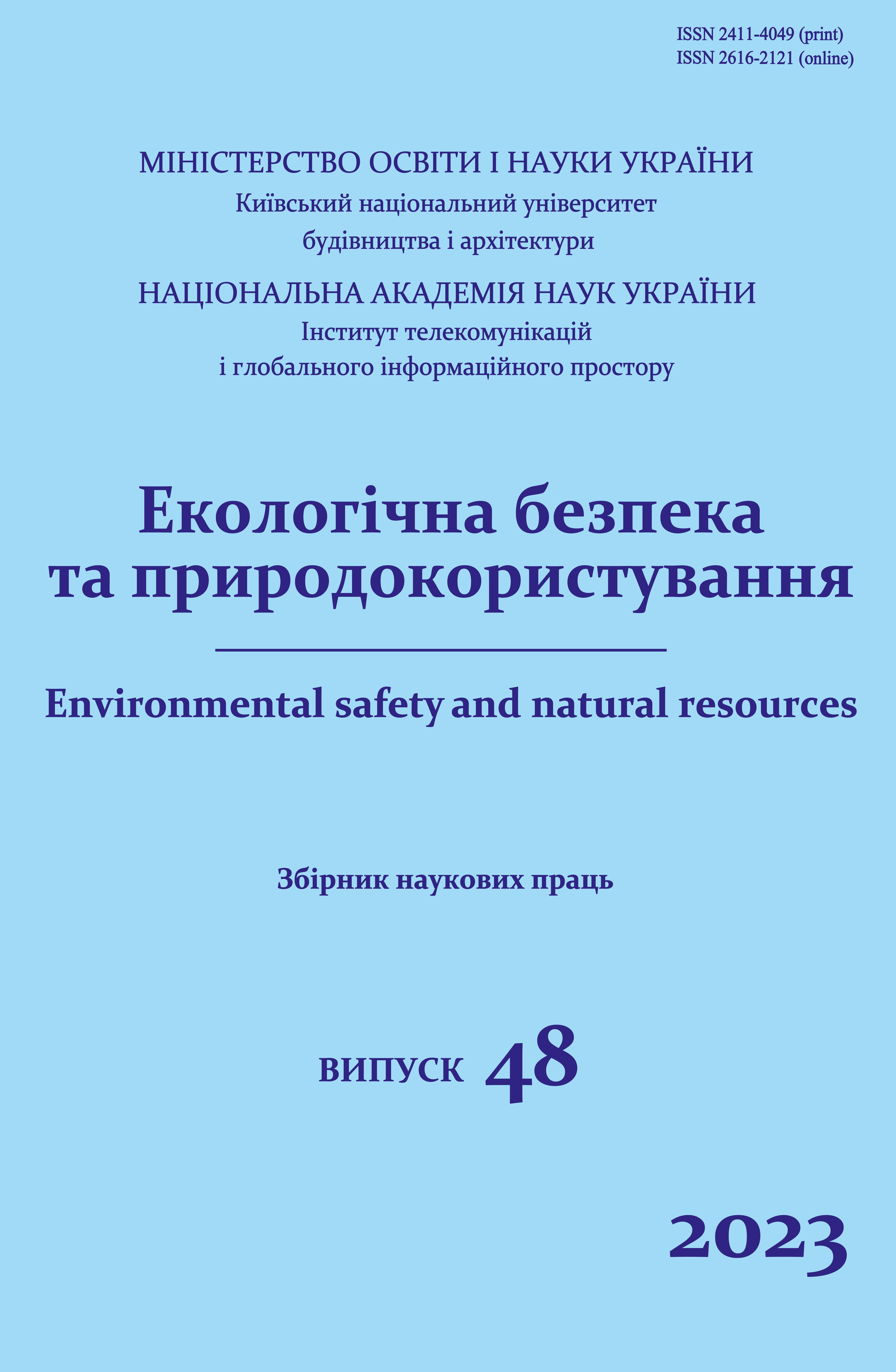ESG criteria in green rebuilding of Ukraine
DOI:
https://doi.org/10.32347/2411-4049.2023.4.5-20Keywords:
ESG, green building, reconstruction of Ukraine, environmental safetyAbstract
The historical retrospective of the construction industry shows a tendency to move to a qualitatively new level after crises and global upheaval. Global markets are currently being reformatted to reflect new investment priorities, where environmental, social and governance (ESG) criteria are gaining essential importance, and Ukraine is at the center of global transformations. Ukraine's post-war reconstruction plans include the use of green innovative technologies, as the formation of a green economy is the basis of the European Union Association Agreement. The concept of "green recovery" has become widespread, as investments in low-carbon technologies strengthen the country's resilience. Implementation of green building principles saves resources and energy, stimulates innovation and competitiveness, and increases the confidence of investors and increasingly conscious consumers. Current international trends are moving towards global decarbonization of the world economy and the widespread implementation of ESG non-financial reporting standards to screen and increase transparency of business. The construction sector plays a key role in achieving the Sustainable Development Goals, given the significant economic, environmental and social impacts of the construction industry. The requirements for decarbonization, safety and well-being of buildings are growing, and the increasing volume and complexity of data requires new tools and approaches. The application of ESG principles involves the creation of long-term sustainable value in the interests of the company and its stakeholders. In the construction sector, ESG factors are crucial for determining the overall value and potential of a property, which helps investors to obtain more information for decision-making and risk assessment. The use of (ESG) indicators ensures transparency, objectivity and measurability of the company's performance. Businesses that demonstrate concrete commitments to sustainable development will become undisputed leaders in their industries in the next 30 years and will gain access to investment capital. On the other hand, companies that do not take care of compliance with international standards in a timely manner risk losing business in the medium term.
References
Becker, T., Eichengreen, B., Gorodnichenko, Y., Guriev, S., Johnson, S., Mylovanov, T., Rogoff, K., Weder di Mauro, B. (2022). A Blueprint for the Reconstruction of Ukraine. London: Centre for Economic Policy Research.
Appendix on Corporate Governance and Sustainable Development to the Corporate Governance Code (ESG Appendix) (2020). National Securities and Stock Market Commission of Ukraine: Ukrainian Academy of Corporate Governance [in Ukrainian].
Green post-war reconstruction of Ukraine: vision and models. Summary policy brief. (2022). Resource & Analysis Center “Society and Environment”.
Herekar J. (2022). Report: ESG disclosure standards for non-bank financial institutions with recommendations. Kyiv: Project Supporting Green Recovery in Ukraine, National Bank of Ukraine, United Nations Development Programme [in Ukrainian].
Carbon Disclosure Project, CDP. (2023, September 7). Retrieved 07.09.2023 from https://www.cdp.net
Climate Disclosure Standards Board, CDSB. (2023, September 7). Retrieved 07.09.2023 from https://www.cdsb.net
Draft Ukraine Recovery Plan. Materials of the “Digitalization” working group. (2022). The National Council for the Recovery of Ukraine from the Consequences of the War.
Ellis M. (2022). From Green to ESG: How Data-Driven Transparency Changed Real Estate for Good. Measurabl.
European Financial Reporting Advisory Group. (2023, September 7). Retrieved 07.09.2023 from https://www.efrag.org
European Sustainability Reporting Standards. (2023, September 7). Retrieved 07.09.2023 from https://www.efrag.org/lab6?AspxAutoDetectCookieSupport=1
Ganster, R., Kirkegaard, J., Kleine-Brockhoff, T., Stokes, B. (2022). Designing Ukraine’s Recovery in the Spirit of the Marshall Plan: Principles, Architecture, Financing, Accountability. Recommendations for Donor Countries. Washington: German Marshall Fund.
Global Reporting Initiative, GRI. (2023, September 7). Retrieved 07.09.2023 from https://www.globalreporting.org
Grabosch, R. (2021). The supply chain due diligence act (Lieferketten sorgfaltspflichtengesetz, LkSG). Labour and social justice. Friedrich-Ebert-Stiftung.
International Financial Reporting Standards, IFRS). (2023, September 7). Retrieved 07.09.2023 from https://www.ifrs.org
Non-Financial Reporting Directive, NFRD. (2014). Retrieved 07.09.2023 from https://www.greenfinanceplatform.org/policies-and-regulations/non-financial-reporting-directive-nfrd-directive-201495eu-and-proposal
Sustainability Accounting Standards Board, SASB (2023, September 7). Retrieved 07.09.2023 from https://www.sasb.org
Task Force on Climate-Related Financial Disclosures, TCFD (2023, September 7). Retrieved 07.09.2023 from https://www.fsb-tcfd.org
The United States Securities and Exchange Commission, SEC. (2023, September 7). Retrieved 07.09.2023 from https://www.sec.gov
Whelan, T., Atz, U., Clark, C. (2021). ESG and financial performance: Uncovering the Relationship by Aggregating Evidence from 1,000 Plus Studies Published between 2015–2020. CFA Rockefeller Asset Management.
Downloads
Published
How to Cite
Issue
Section
License
Copyright (c) 2023 Kryvomaz Т.I., Chaliy I.H., Hamotskyi R.O., Ilchenko I.S., Tsyba A.M.

This work is licensed under a Creative Commons Attribution 4.0 International License.
The journal «Environmental safety and natural resources» works under Creative Commons Attribution 4.0 International (CC BY 4.0).
The licensing policy is compatible with the overwhelming majority of open access and archiving policies.

